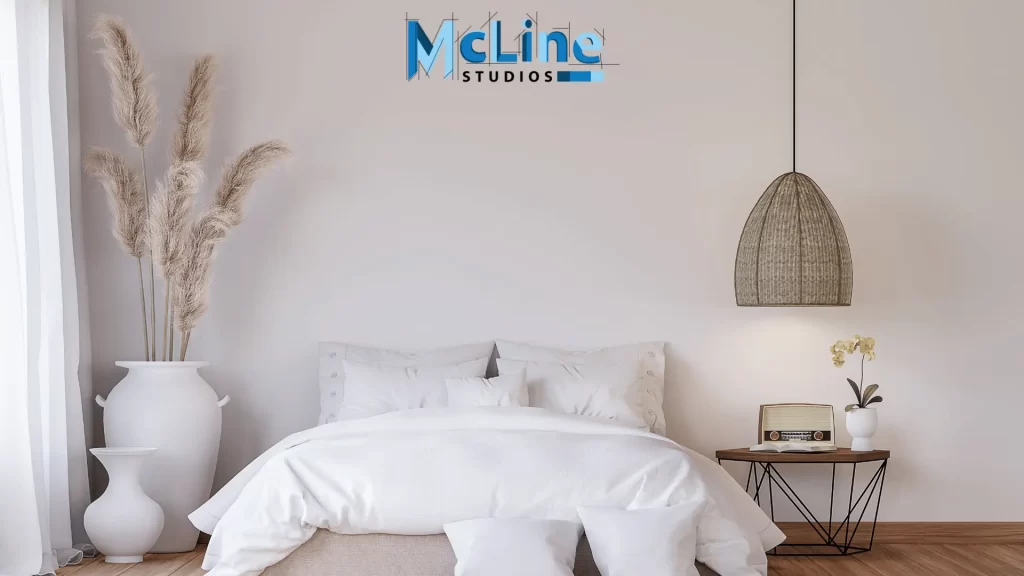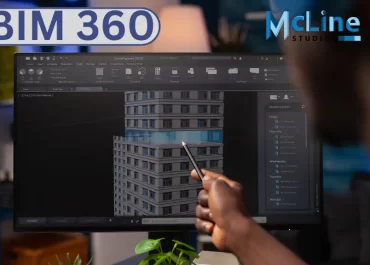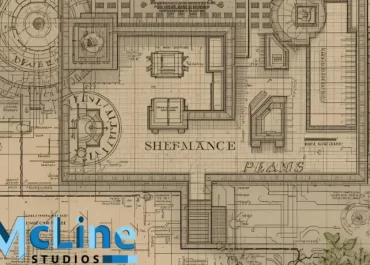In architecture, the term “house rendering” often surfaces in discussions, yet its intricacies and significance might dodge many. Rendering is the process of creating a visual representation of a building or structure before it is constructed or renovated. This pivotal stage allows architects, designers, and clients to envision the final product in detail, facilitating informed decision-making and ensuring the alignment of expectations.
However, house rendering transcends mere visual appeal; it serves a profound purpose in the architectural world. Beyond aesthetics, rendering enables stakeholders to evaluate functionality, spatial arrangement, and structural integrity. It acts as a bridge between conception and realization, offering a tangible preview of the envisioned space.
Moreover, in this blog, we’ll explore what house rendering involves, its key benefits, and how technology is transforming rendering to create increasingly photorealistic visualizations of unbuilt homes and buildings.

What is House Rendering?
House rendering refers to the process of creating 2D or 3D visualizations of the exterior or interior of a home architectural design. It involves using computer graphics software to translate architectural plans into photorealistic images that accurately convey the appearance, materials, lighting, and other details of the designed space.
The purpose of renderings is to help architects, designers, and clients better visualize and evaluate a proposed design before construction. They provide a lifelike representation of what the finished home will look like that is more intuitive than looking at floorplans and elevations alone. Quality renderings require artistic skill in working with materials, lighting, and perspectives to craft an image that is visually appealing yet accurately portrays the intent of the design.
Renderings are especially useful for marketing luxury custom homes or pitching design concepts to clients. They help sell the aesthetic vision and allow clients to make selections for finishes, furnishings, and styling before construction begins. Overall, architectural visualization through quality renderings is a crucial part of the design process for bringing concepts to life on the page before they take shape in the real world.
Purpose of House Rendering
House rendering is used by architects, designers, real estate agents, home builders, and homeowners to create realistic 3D visualizations of home exteriors and interiors. House rendering serves several purposes in the field of architecture and construction:
- Visualization: Rendering allows architects, designers, and clients to visualize how a building will look once it’s completed. It provides a realistic representation of the exterior appearance, including materials, colors, textures, and lighting conditions.
- Design Communication: Renderings help to communicate design ideas and concepts effectively. They provide a clear visual representation of the architect’s vision, enabling stakeholders to better understand the project and make informed decisions.
- Marketing and Sales: High-quality renderings are often used for marketing purposes to attract potential buyers or investors. They can be used in promotional materials, advertisements, and presentations to showcase the features and aesthetics of a property.
- Approval Process: Renderings are essential for obtaining approvals from relevant authorities, such as planning departments and zoning boards. They provide a preview of the proposed development, helping authorities assess its compliance with regulations and guidelines.
- Design Iteration: Renderings facilitate the design iteration process by allowing architects and designers to experiment with different design options and configurations. They can quickly create and modify renderings to explore various possibilities and refine the design accordingly.
- Client Satisfaction: Renderings play a crucial role in managing client expectations and ensuring their satisfaction with the outcome. By providing realistic visualizations early in the design process, clients can provide feedback and make revisions as needed, leading to a more satisfactory result.
Overall, house rendering serves as a valuable tool throughout the entire architectural and construction process, from conceptualization and design to marketing and implementation. It helps stakeholders visualize, communicate, and evaluate architectural designs effectively.
How Does House Rendering Work?
House rendering, also known as exterior rendering or stucco rendering, is the process of applying a layer of material to the external walls of a building to improve its appearance, protect it from the elements, and provide insulation. Here’s a general overview of how house rendering works:
- Surface Preparation: Before rendering can begin, the surface of the walls must be cleaned thoroughly to remove any dirt, dust, or loose material. Any cracks or imperfections in the surface should be repaired to ensure a smooth finish.
- Priming: A primer is applied to the surface to improve adhesion and ensure that the rendering material bonds properly to the wall. This step also helps to seal the surface and prevent moisture from penetrating.
- Application of Rendering Material: The rendering material, which can be cement-based, lime-based, acrylic-based, or polymer-modified, is mixed according to the manufacturer’s instructions. It is then applied to the wall using a trowel or spray equipment. The thickness of the rendering layer can vary depending on the desired finish and the type of material being used.
- Texturing: While the rendering material is still wet, it can be textured using various techniques to achieve the desired look. Common textures include smooth, textured, sponge finish, or even patterns created with tools.
- Curing: Once the rendering material has been applied and textured, it needs time to cure and harden. The curing time can vary depending on factors such as temperature, humidity, and the type of rendering material used.
- Finishing: After the rendering has fully cured, any final touches or finishes, such as painting or sealing, can be applied to further enhance the appearance and durability of the surface.
House rendering offers several benefits, including improved aesthetics, increased weather resistance, enhanced thermal insulation, and protection against moisture and cracks. It can also help to increase the value of a property by giving it a fresh and modern look.
Conclusion
In conclusion, the process of house rendering stands as an indispensable tool in the modern architectural landscape, revolutionizing the way we envision, design, and market our residential spaces. From its ability to breathe life into blueprints to its capacity to convey the intricate details of a proposed structure with unparalleled realism, house rendering has become a cornerstone in the realm of architectural visualization.
At the forefront of this transformative technology is McLine Studios, a premier provider of architectural 3D rendering services. With its commitment to precision, creativity, and innovation, McLine Studios has established itself as a trusted partner for architects, developers, and real estate professionals alike. Through their meticulous attention to detail and cutting-edge rendering techniques, McLine Studios brings visions to life, enabling clients to showcase their designs with clarity and impact.




